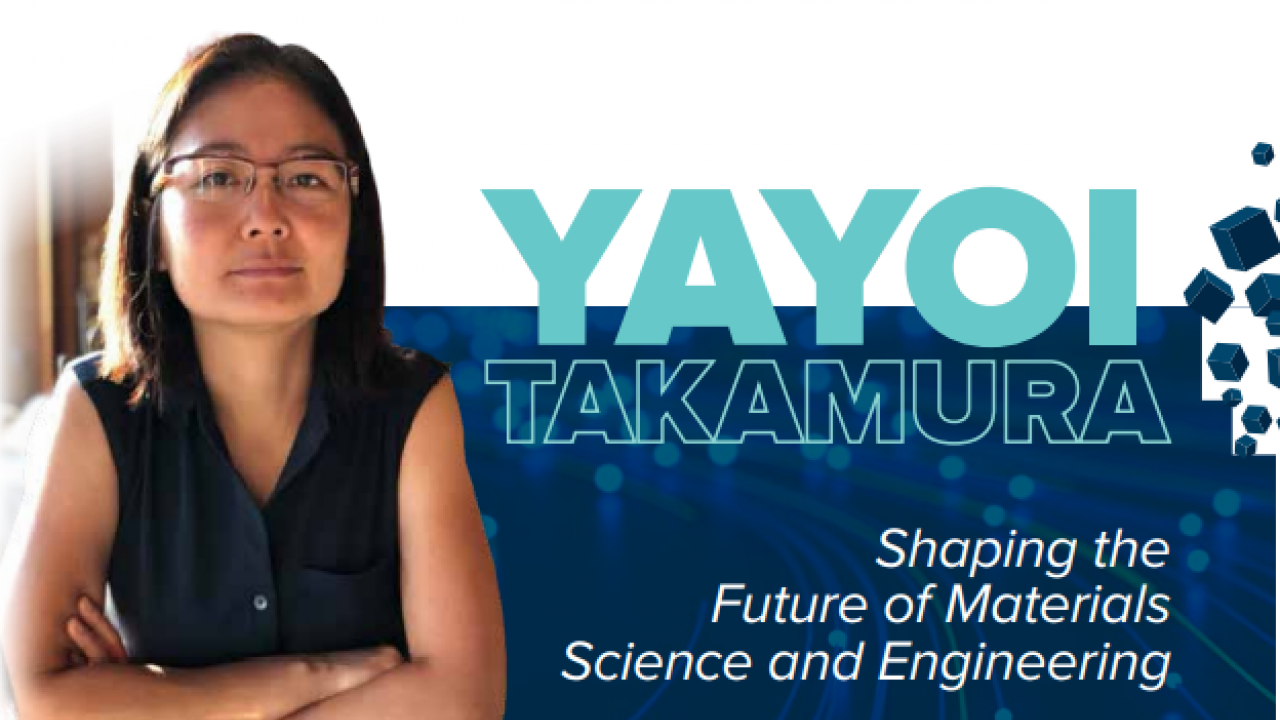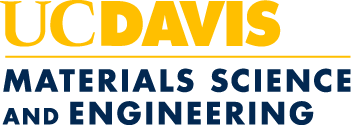
Yayoi Takamura: Shaping the Future of Materials Science and Engineering

PROFESSOR YAYOI TAKAMURA is chair of the Department of Materials Science and Engineering at UC Davis. She joined UC Davis in 2006 and became vice chair of the department in 2017 before becoming chair in July 2020. She is the first woman to lead the department.
Takamura studies the growth of complex oxide thin films, heterostructures and nanostructures, as well as the characterization of the new functional properties that emerge at the interfaces between two dissimilar materials. She aims to develop a fundamental understanding of the interplay between a material’s structural, chemical, magnetic and electronic properties to enable the design of new materials with properties tailored for next-generation spintronic and electronic devices.
As department chair, what are your top priorities for the Department of Materials Science and Engineering?
My priorities include maintaining the best education we can for our undergraduate and graduate students; that’s first and foremost why we’re here as faculty at UC Davis. We recently modified our curriculum to include new degrees and new degree requirements, so I want to implement these modifications fully and then see whether or not they’re the right changes. I also want to interface more with our alumni. For example, we have almost completely new membership for our Board of Advisors with several members who are UC Davis alumni. They have been incredibly engaged with the department, which has been a lot of fun. Finally, the last big priority is improving our rankings and getting our stature out to the greater materials science and engineering committee about the accomplishments of the faculty, staff and students at UC Davis.
What inspires you in your research efforts?
I tell my students that our research within materials science and engineering is fun physics. We always have applications in mind and that can motivate some people. I definitely think about that when I write proposals for funding agencies! But when it comes to my students, I tell them that what should inspire you is that when we do an experiment, we hypothesize ‘this is what’s going to happen.’ Then most of the time, it’s actually not what happens, right? For some people, they’re disheartened, but for me, it means that there is something new that we have yet to discover and need to figure out. I actually think that’s more inspiring. I think it is important for the student to be smart enough, interested enough, and driven enough to learn something new. That’s the whole point of coming to school. As long as they have that sense of adventure, that’s what I’m looking for and hope to inspire in others.
Where do you see the future of your field of research headed? What innovations lie ahead?
In my research group, we make use of pulsed laser deposition to grow layers of materials, with unit cell precision. In this way, we can grow one type of material, switch to a different type of material, and basically stack different layers to create artificial layered materials. We’ve been focusing on one class of material called complex oxides. What I can see in the future is that growth techniques are getting to the point that we can start combining two completely dissimilar classes of materials together in these stacks, going beyond what we would have originally thought were compatible. What we found is that you can have two bulk materials and know what their individual properties, but if we shrink them down to ultrathin layers, their properties change. Furthermore, the interfaces between these materials can have drastically different properties, even depending on the order that we stack the layers, or the orientation angles between them. How do we know exactly what phenomena are occurring in the interface, and then how do we probe these unusual properties?

Right: Scanning transmission electron microscopy image (courtesy Prof. Meng Gu) of a La0.5Sr0.5TiO3 (LSTO) / La0.7Sr0.3MnO3 (LSMO) superlattice showing the atomic level control possible using pulsed laser deposition. Adapted from Journal of Applied Physics, 111, 084906 (2012).
What’s your favorite part of working in the Department of Materials Science and Engineering?
Because it’s a smaller department, whether it’s undergrad or grad students, I feel like I know all the students. If I notice a student is having problems in my class, I can reach out to them, sometimes before they will reach out to me. I feel like the students are more willing to come to me if they have problems because they know that we treat them like family and we want them to succeed. In addition, everyone’s always willing to help each other, which makes for a really collaborative environment.
As a woman and leader in engineering, what advice do you have for students who look to you as a role model?
Throughout my undergrad and graduate student career, I had one only female faculty member in the departments where I studied and the rest were men. It happens that that one female faculty member has been very influential to my career. She took a chance and allowed me to switch research fields from what I was doing as a Ph.D. to work with her as a postdoc and that’s basically the research work that I continue to do now. At UC Davis, we now have four female faculty in the MSE Department.
When I was graduating from my Ph.D. and trying to figure out what I wanted to do, some of the other faculty told me things such as ‘you can’t switch fields,’ or, ‘If you don’t know that you wanted to be a faculty member since you were in middle school, then teaching isn’t the right job for you.’ However, my future postdoc advisor said ‘No, don’t listen to them. I didn’t know either. It’s fine.’ I think it is important to keep in mind that you may meet people who think they’re giving you good advice, but it can be demoralizing. In each case, you should figure out if the advice applies to your actual situation, rather than maybe their own situation. It can also be helpful to reach out to multiple people get a variety of different viewpoints. Sometimes, you may need only 15 minutes with the person to vent, or hear them say ‘Yeah, you’re on the right track.'
This story was featured in the Spring 2021 issue of Engineering Progress.
